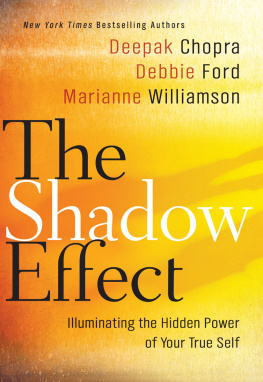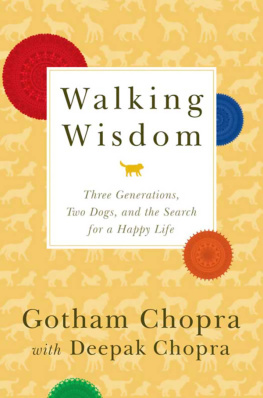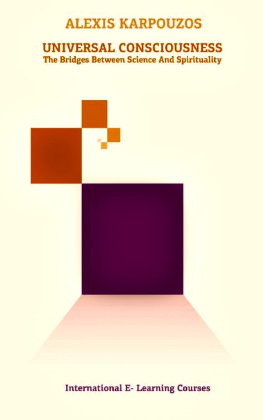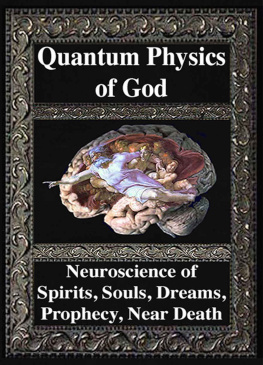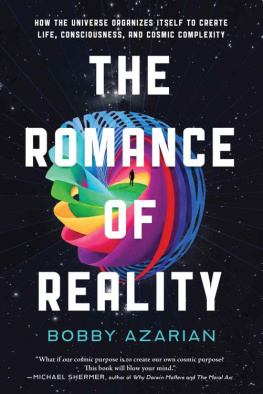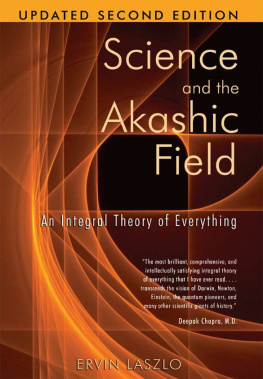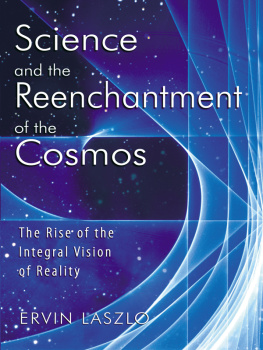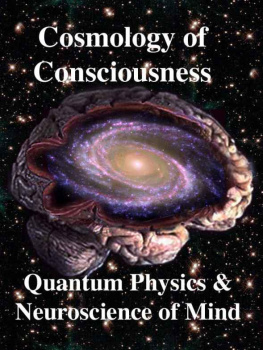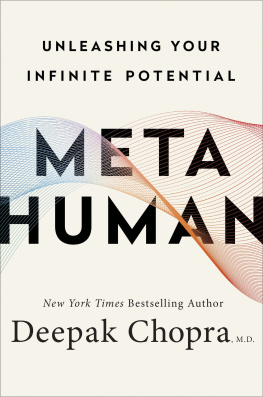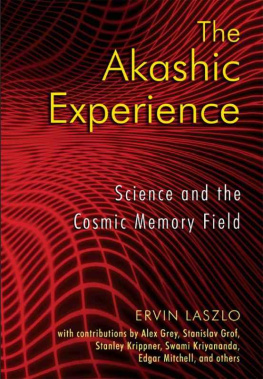Table of Contents
Guide
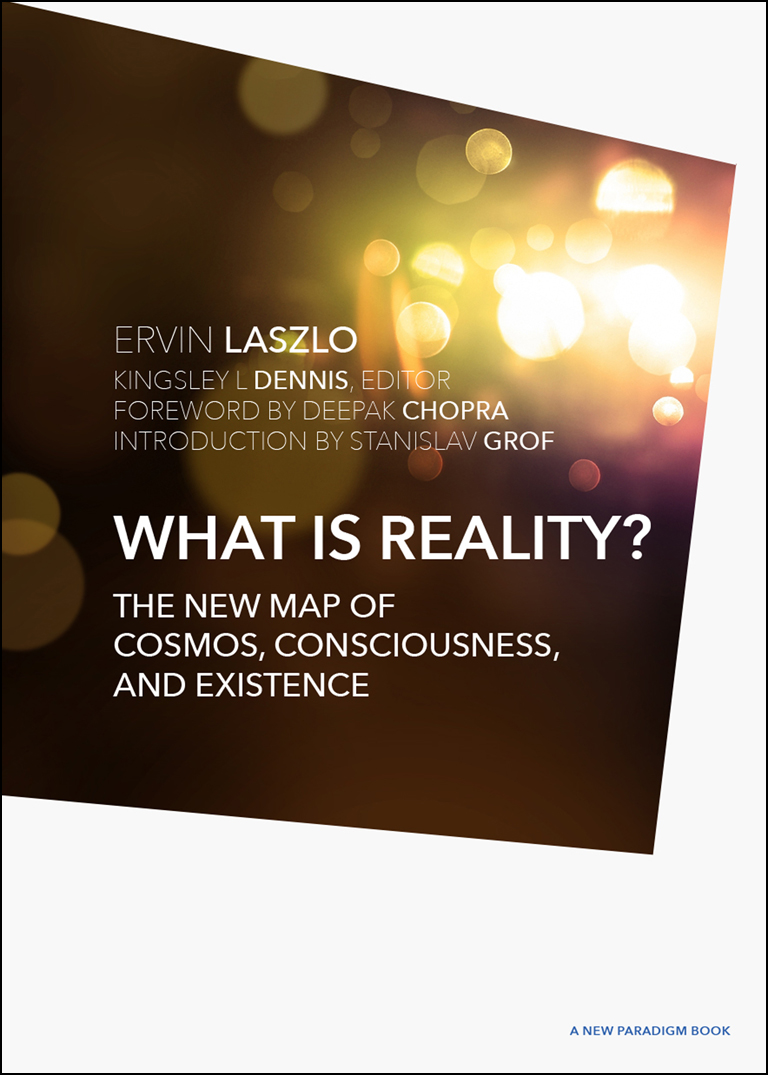


I t gives me pleasure to express my heartfelt thanks to many of my wise friends and colleagues who have contributed to this book. They include Deepak Chopra, Gary Zukav, Stanislav Grof, Nassim Haramein, Jude Currivan, Stephan A. Schwartz, Allan Combs, Stanley Krippner, Ede Frecska, Nitamo Federico Montecucco, Na Aak (Paola Ambrosi), Tulku Thondup, Jean Houston, Christopher Bache, Shamik Desai, Master Zhi-Gang Sha, Kingsley L. Dennis, and John R. Audette. My long-term collaborator Maria Sagi provided constant information and vital inspiration as my theories and ideas evolved from the inception of this summation to their current shape. I have had the benefit of expert advice from Giuseppe Vitiello of the University of Salerno and had illuminating conversations and correspondence with Sylvie Ouellet, Anne Deligne, David Rousseau, Katya Walter, as well as my long-term agent and friend William Gladstone. A special thanks to the dedicated team of SelectBooks headed by Kenzi Sugihara, the publisher, with Nancy Sugihara as managing editor, Kenichi Sugihara in charge of publicity and marketing, and Yoji Yagamuchi as editor. Their care and expertise and patient commitment was a vital support for me as we worked our way through the multiple drafts of this book.
The discussions I had with my elder son, Christopher, a leading exponent of the new discipline of ethical and responsible business management and a true new-paradigm business leader himself, and the moral and emotional support of Carita, my constant companion and better half for more than a half-century, have been essential. And I am truly grateful for the constant love and care of my younger son, Alexander, a true cultural creative if there ever was one, for accompanying me throughout the adventure of drafting this study.


SHAMIK DESAI
IN HIS BRILLIANT EXPOSITION OF THE new map of reality, Ervin Laszlo validates in light of contemporary scientific research ancient truths espoused by the mystical branches of the worlds principal wisdom teachings: Hinduism, Buddhism, Taoism, Kabbalah, Christian mysticism, Sufism. He has accomplished the spectacular feat of harmonizing and validating these truths through the empirical realmin the language of quantum physics. He has elevated physics to the level of metaphysics and placed consciousness in its rightful place: anywhere and everywhere.
All the great wisdom traditions agree that every thing is a manifestation of a larger Oneness. They hint regarding the meaning of existence: the One Source yearns deeply to know and love Itself. Hence, it has manifested in a material form (at a higher band of vibration, in Laszlos language) with the intention of realizing Itself through a process of respiritualization. This process unfolds as each sentient being in the universe opens the spiritual eye and perceives the universe through the lens of Oneness, and then turns its superperceptions into reality through loving, mindful engagement.
The Semitic traditionsJudaism, Christianity, Islamtell us that our highest duty lies in growing our souls by hallowing the world and bringing heaven upon earth by the end of time. The religious project in Semitic faiths is for man to make heaven and earth one by sacralizing the world (through acts of righteousness, love, jihad), transforming it into a vast undivided sacred space, a shoreless unbroken ocean of brotherly lovea Philadelphia, a Zion, a Promised Land: what physicists would call the spacetime domain of elevated vibrations. The essence of the divine project as understood in the Abrahamic faiths (and particularly by their mystical representatives) is to not rest until the One Truth becomes fully embodied. The unidirectional linearity of time as understood by the Semitic peoples adds to the urgency of this mission.
In the Eastern traditionsHinduism, Buddhism, Taoismlifes primary task is to align oneself with dharmathe moral order of the universeand, in times of societal imbalance, to restore dharma by re-aligning with others as well as with oneself. Alternatively, they tell us that the task is to wake up and help others to wake up, or in the Mahayana branch of Buddhism, to seek nirvana (ego-extinguishing) for all. Or againby each of us assuming that state of unselfconscious playfulnesswu-weiwhich allows us to draw maximum chi from the cosmosto manifest the Tao, making it a living presence in the world. Collectively, we are urged to peel back the layers of maya and reveal the core of consciousness behind the veil of appearances, elevating that which is Immanent to the level of the Transcendent until advaita, or nonduality, is laid bare. This objective is achieved when we all do what we ought to doi.e., dispatch our highest duties with detached equanimity, act purely with uncalculating intentionality, walk the path and the way, tap into the Source, achieving spontaneous creative resonance with ourselves and the world by entering into the flow of love and life.
The meaning and purpose of existence is to align and harmonize our relations with the unseen order, the Ultimate Reality, as individualsand those among us with an evolved consciousness are to seek such alignment also at the societal and planetary levels. The Hindu and generally Eastern obsession with moral order and restoring dharma is analogous to the Judaic-Semitic preoccupation with world-hallowing.
It might be argued that there is a subtle difference in emphasis and tone between the Semitic faiths and the Eastern systemsthat the Semitic traditions are more life-affirming and world-embracing (God saw all that he had created, and beheld that it was very good, Genesis 1:31), and that the Eastern traditions are more world-denying (recall Buddhas many reflections on the repulsiveness of the human body). The Semitic systems imply that the missionary work of elevating the consciousness of ones external surroundingsthe hallowing of the worldwill lead to the elevation of ones own consciousness by default. And in the somewhat more inward-facing Eastern traditions it is implied that the elevation of ones own consciousness will elevate the consciousness of the whole universe (i.e., shall restore dharma), likewise by default. But these are variations of nuance only. For internal and external coherence are mutually reinforcing and cannot be decoupled, even if internal coherence is given a higher valuation. The end result is the same: every instance of mindful engagement by any sentient being advances the vector of evolution, increasing the creative intelligence of the cosmos and the sum total of consciousness in the world.
Ervin Laszlos understanding of the ultimate meaning and purpose embedded in the universe is strikingly similar to that of the wisdom traditions. The particular symbolic and linguistic manifestations vary across spiritual traditions, but the underlying premise and storyline remain the same. So, too, with Laszlos new paradigm map of reality does a familiar metaphysical narrative come to light.
Next page


